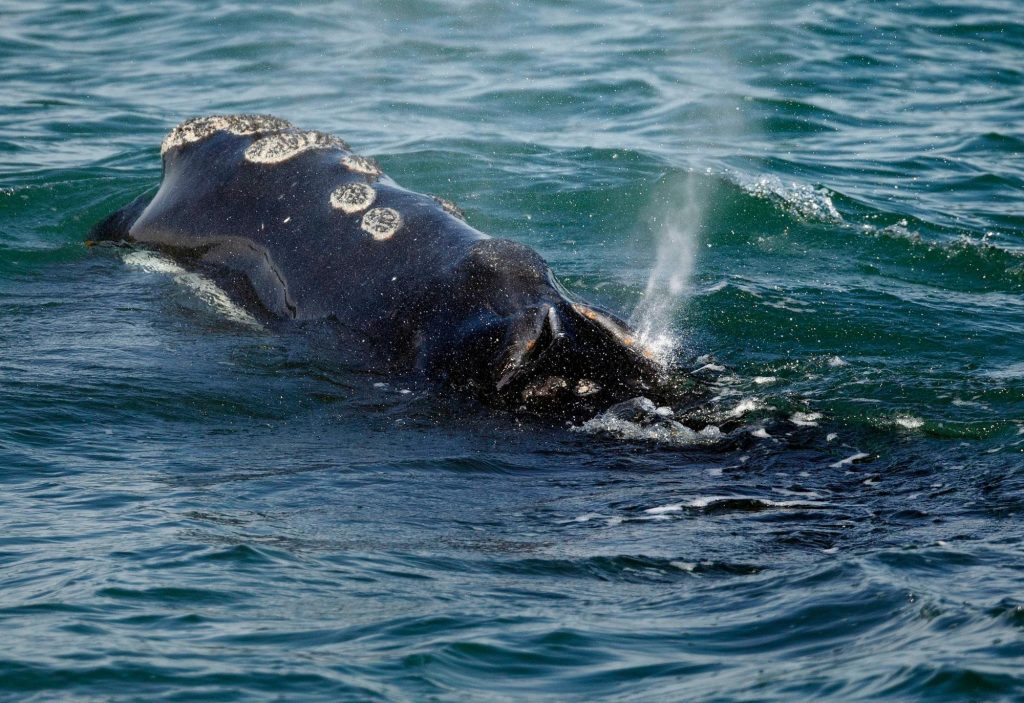A proposal to set aside two million acres in the Gulf of Maine as a hub for wind energy is being strongly opposed by Massachusetts fishermen. They argue that the development fails to address the dangers to the North Atlantic right whale.
A few organizations that represent fishermen in Massachusetts are joining forces with similar groups from New England to criticize the Biden administration’s intentions to industrialize the region. off the coasts of Massachusetts, New Hampshire and Maine.
The federal Bureau of Ocean Energy Management finalized the designation earlier this month, stating that it aims to support President Biden’s clean energy objectives.
The area, which extends from 23 to 92 miles off the coasts of the three states, has the potential to generate 32 gigawatts of clean energy, surpassing the current state goals for offshore wind energy in the Gulf of Maine: 10 GW for Massachusetts and 3 GW for Maine, according to BOEM.
Specifically, industrialization could result in the installation of 30 gigawatts of offshore wind energy capacity by 2030 and 15 gigawatts of floating offshore wind energy capacity by 2035, according to the federal government.
Over the years, local, state, and federal officials have imposed a growing number of regulations on fishermen to protect the endangered right whales, including restricting their access to certain waters. However, fishermen argue that the industrialization of the two-million-acre area contradicts the goal of protecting endangered species..
Fishermen are disappointed that the WEA designation prioritizes foreign energy developers over marine mammal protection, according to a statement from the Gulf of Maine Fishing Associations. They believe that this favoritism contrasts sharply with the federal government’s stringent measures to protect whales by burdening commercial fishing with unnecessary restrictions.
The Bay State group’s part of the coalition include the Cape Cod Commercial Fishermen’s Alliance; Gloucester Fishermen’s Wives Association; Massachusetts Fishermen’s Partnership; Massachusetts Lobstermen’s Association; and Massachusetts Seafood Collaborative.
Initially, the government sought to industrialize a much larger zone in the Gulf of Maine, but input from local residents, fishermen, and other stakeholders led to a significant 80% reduction in the final designation for potential leasing.
“The resulting (wind energy area) avoids important areas for lobster fishing, North Atlantic right whale habitat, and other important fishing areas and habitats,” the Bureau of Ocean Energy Management stated in a release.
Katie Sinding Daly, senior vice president of law and policy at the Boston-based Conservation Law Foundation, said she believes the feds “did a thorough job of listening to concerns about protecting marine life.”
“CLF will continue to work with BOEM to ensure all possible protections for vulnerable marine wildlife and important habitats are built into the process as it moves toward leasing and construction of these floating turbines,” Daly said in a statement.
The effort by environmentalists to make offshore wind turbines a major power source has been ongoing for years, focusing initially on areas south of Nantucket and Martha’s Vineyard in Massachusetts. The new zone designated lies to the east of the state.
Fishermen have recognized the improvements in the final designation, but they still have concerns about whether the offshore wind development will directly harm “commercial fishing, sensitive habitats, and maritime communities that rely on the fishing industry.” A federal judge ruled that the National Marine Fisheries Service was incorrect in adding a 200-square-mile wedge between state and federal waters to an existing closure, which extends roughly 9,000 square miles off the Massachusetts coast, just a day before the designation.The closure, active from February to the end of April, is considered a measure to protect right whales.
There are fewer than 360 right whales left in the ocean, including 70 reproductively active females.
Federal officials and scientific agencies state that climate change is the greatest threat to the right whale, in contrast to the belief from opponents that offshore wind projects are responsible for a series of whale deaths on the East Coast over the past year-plus.
Environmentalists say many right whales have been struck by ships or become entangled in fishing gear, which are the leading causes of their death.
In late January, a female calf was found dead off of Martha’s Vineyard, with officials reporting a rope entangled around its tail. Weeks later, a New England Aquarium aerial survey team counted 31 right whales in shipping lanes east of Nantucket.
BOEM and the National Oceanic and Atmospheric Administration released final plans in January to protect the endangered species, including a strategy that would use artificial intelligence and passive acoustic monitoring to determine the whales’ whereabouts at a given time and to monitor the impact of wind development on the animals.
Angela Sanfilippo, the president of the Gloucester Fishermen’s Wives Association, urged federal authorities to proceed with caution in developing the Gulf of Maine designation, based on how the construction and operation of the wind farms could further threaten the right whale.
It is uncertain how the noise and disruption caused by such developments could affect the migration, feeding, and breeding patterns of these whales, according to a letter she wrote to BOEM last November. She emphasizes the critical status of the right whale population.Boston Herald wire services, specifically State House News Service, and Associated Press reported this information. Fishermen argue that a federal designation aimed at turning two million acres into a hub for clean energy development in the Gulf of Maine is “inconsistent with a policy of endangered species protection.”.
BOEM and the National Oceanic and Atmospheric Administration released final plans in January to protect the endangered species, including a strategy that would use artificial intelligence and passive acoustic monitoring to determine where the whales are at a given time and to monitor the impacts of wind development on the animals.
Angela Sanfilippo, president of the Gloucester Fishermen’s Wives Association urged the feds to proceed with caution in developing the Gulf of Maine designation based on how the construction and operation of the wind farms could further threaten the right whale.
“The noise and disruption caused by such developments are not fully understood, but they have the potential to affect the migration, feeding, and breeding patterns of these whales,” she wrote in a letter last November to BOEM. “The uncertainty surrounding these impacts calls for a cautious approach, considering the critical status of the right whale population.”
Boston Herald wire services, namely State House News Service and the Associated Press









